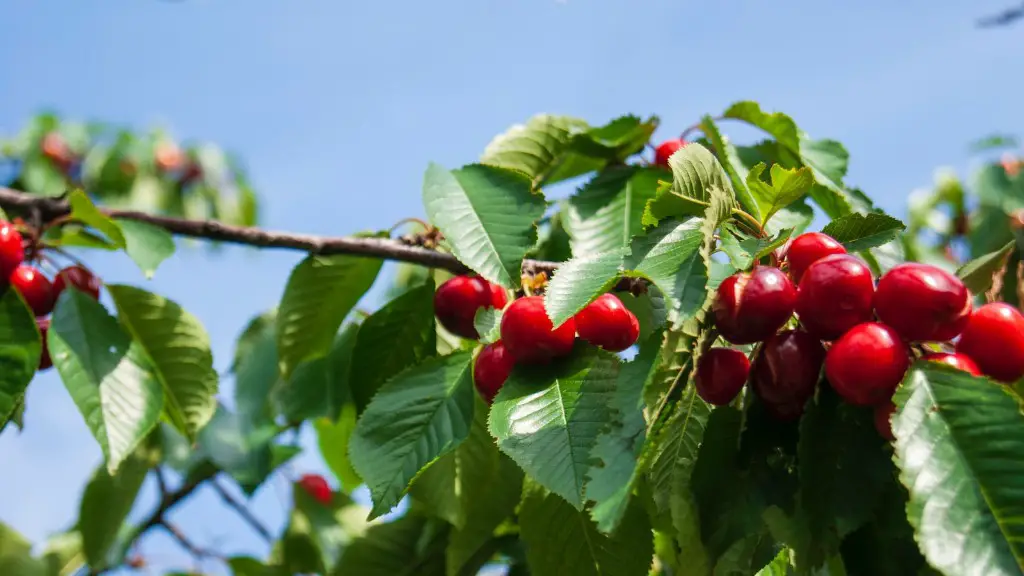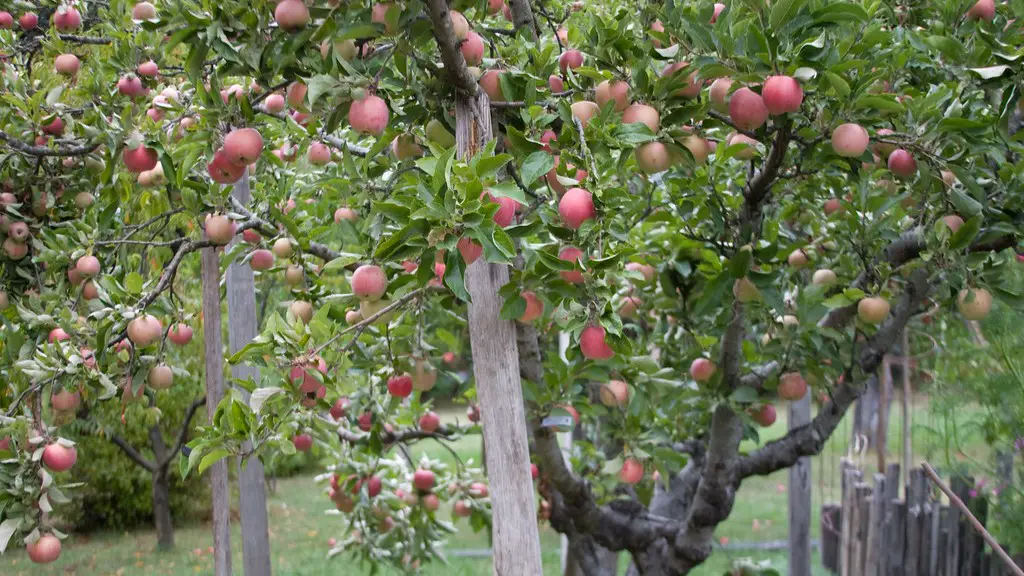Background Information
Cherry trees are beloved by many and their delicious fruit is enjoyed by people across the world. These trees are an incredibly valuable addition to any yard, park or garden and it is important to be able to tell them apart from other types of trees. Differentiating cherry trees from other trees does not have to be a difficult task. With the right information and a bit of knowledge, it is easy to tell if a tree is a cherry tree or not.
Identification & Characteristics
Cherry trees can be identified by their smooth, bark that is usually grey or brown in colour. The branches of a cherry tree are round and they usually bend slightly. The centre of the branches will usually droop as leaves grow on them. The leaves on a cherry tree are bright green, smooth, and typically oval in shape.
In the spring months, these trees bloom with beautiful white flowers that are often tinted with pink. If a tree is in full bloom, it is easy to identify whether it is a cherry tree or not. In the summer months, a cherry tree will bear clusters of small fruits. These are round and slightly flattened, with a pronounced “cheek” on one side. They turn a dark red colour as they ripen and are generally sweet and juicy.
Tree’s Environment
The growing environment of a particular tree can also give clues as to whether it is a cherry tree or not. Cherry trees are usually planted in rows and they prefer areas with moist, well-drained soil. They can also tolerate a wide range of temperatures but do not do very well in windy areas.
Location & Season
The location and season of the year can also be used to differentiate cherry trees from other types of trees. Cherry trees generally bloom in the spring months, with the flowers being the most noticeable sign. In the summer months, clusters of cherries will form and ripen into a dark, red colour.
Cherry trees are most commonly found in the northern United States and Canada, although some varieties can also be found growing in Europe and parts of Asia. If you live in one of these locations, it is likely that you have seen or encountered a cherry tree already.
Expert Perspectives
Experts in tree identification generally advise that people looking to identify cherry trees should keep an eye out for the distinctive characteristics of these trees. These include the smooth bark and round branches, the white flowers and the clusters of dark red fruits.
Experts also suggest that cherry trees can be identified by their location. These trees prefer to grow in moist, well-drained soils and areas with lower wind speeds.
Analysis & Insights
Identifying a cherry tree is not necessarily a difficult task and can be made easier with a bit of knowledge about the tree’s characteristics and growing conditions. It is important to know what the distinctive characteristics of a cherry tree are, such as the smooth bark, round branches and the clusters of dark red fruits. Knowing the typical environment in which cherry trees prefer to be planted in and the locations in which they can be found can help to differentiate these trees from other types of trees.
Facts & Figures
Cherry trees are widely cultivated trees that are native to North America, Europe and parts of Asia. They are widely valued for their delicious fruit and beautiful flowers. These trees require well-drained soils and they usually grow in humid climates. They can tolerate a wide range of temperatures but should be sheltered from strong winds.
Health Benefits & Risks
Cherry trees are known to possess a variety of health benefits. The fruits of these trees are a good source of vitamins, minerals and dietary fibre and are packed with antioxidants. Studies have shown that consumption of cherries can reduce inflammation and may help to lower cholesterol levels.
It is important to remember that cherry trees can also be a source of danger and risk. The bark, leaves and fruit of these trees are poisonous to humans and should be avoided. If these trees are planted in areas that are easily accessible, it is important to make sure that children and pets are kept away from them.
Pruning & Maintenance
Cherry trees require pruning in order to keep them healthy and productive. Pruning helps to maintain the size and shape of the tree and prevents diseases and pests from attacking the tree. Pruning should be done in late winter or early spring before the tree begins to flower.
It is also important to give cherry trees regular water and fertiliser in order to ensure that they have the nutrients they need to grow. If a cherry tree is not given the right amount of water, it can become stressed and may die.
Harvesting & Storage
Cherry trees typically produce fruit that is ready to be harvested in the summer months. The cherries should be harvested when they are dark red in colour and should be handled with care. If the cherries are picked too early, they will not ripen properly and can become overripe.
Cherry fruits can be stored for a short period of time before being eaten. Dried cherries can also be stored for longer periods of time. It is important to store cherries in a cool and dry environment and to avoid refrigerating them.
Uses & Recipes
Cherries are a versatile fruit that can be used in a wide variety of recipes. They can be used in jams, pies, cobblers, and desserts. Cherries can also be used in salads, as a topping for ice cream, or as an ingredient in savoury dishes.
Fresh cherries can also be used to make a wide variety of drinks. Some of these include fruit smoothies, cocktails, and punches. These drinks are refreshing and can be enjoyed year-round.
Conclusion
Identifying a cherry tree is not difficult if you know what to look for. These trees can often be identified by their unique characteristics such as their smooth grey or brown bark, white flowers and clusters of dark red cherries. Cherry trees are also easy to differentiate from other trees due to their preferred growing environment and the locations in which they can be found. With a bit of knowledge about these trees, anyone can be able to tell if a tree is a cherry tree or not.

